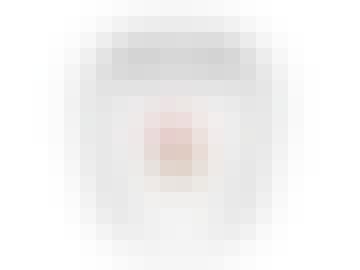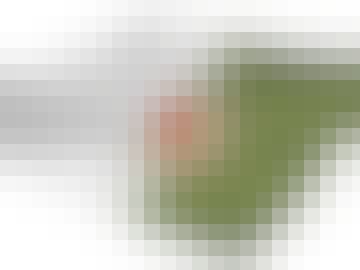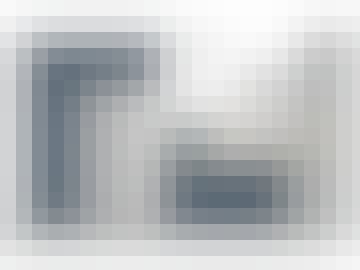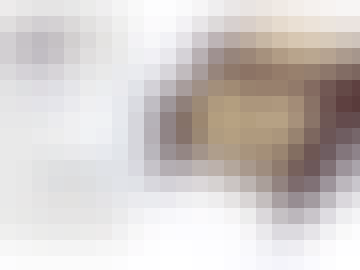
Been meaning to learn SketchUp? Or you've picked up the basics but wonder if you're doing things the wrong way? Get started by learning the right way to use the fundamental drawing, editing and navigation tools.

Find out how to create well-organized 3D models, plus learn techniques to avoid common pitfalls for new SketchUp users.

Discover how to bring your 3D models to life with colors, materials, and images.

Learn how to style your model to get everything looking just the way you imagined.

Learn how to use Photoreal Materials - a new SketchUp feature (SketchUp 2025 or later) that adds more realistic-looking reflections to colors and materials in your model.

Once you know the fundamental tools in SketchUp, you’re ready to learn these strategies for applying your skills to more difficult, everyday modeling problems.

Learn about terrain modeling, working with satellite and geo-coordinates, and how SketchUp can fit into a landscaping workflow.

SketchUp is great for creating 3D models. But did you know you can use it to create 2D drawings as well? Learn how in these lessons.

Most projects start from existing measurements or drawings. Learn how to turn field measurements, PDFs and CAD drawings into an organized 3D SketchUp model.

Learn how to draw 3D objects like doors, windows, cabinets and more to fill in your project.

Learn how to find high-quality models on the 3D Warehouse to give life to your designs.

Learn how to go beyond basic default materials in SketchUp to enhance the appearance of your SketchUp designs.

Learn how to use Styles, Section Cuts and Scenes that allow you to create high quality presentations.

On a deadline? Or just excited to create your first renderings quickly? Get started learning V-Ray for SketchUp by walking through an easy-to-follow 7 step process for creating successful renderings.

Imagine you’re a professional photographer and learn to follow similar steps to frame your shot, adjust your lens settings and develop an eye for composing compelling renderings.

V-Ray’s main job is to shine realistic lighting into your SketchUp model. Learn the basics of how to set up and control sunlight, environment light and artificial lights in your renderings.

V-Ray adds realism by calculating how light bounces off the materials in a scene. Learn the fundamentals of how to add realistic materials, as well as how to take control of how those materials interact with light to produce eye-catching renderings.

A critical step in the rendering process is making sure you add realistic detail to your model. We'll cover strategies for achieveing the right level of detail, and you'll take your renderings from boring to beautiful.

Learn the high-quality render settings to use for creating your final rendering, as well as the strategies and tools for enhancing that final rendering in ways that turn it from looking computer-generated to truly photorealistic.

Get started in LayOut by learning the right way to use the fundamental drawing, editing and navigation tools to put together quick and powerful presentations.

Find out the best workflow for setting-up all of your construction drawings, and the best methods for keeping them accurate.

Streamline LayOut by learning to leverage Templates, including custom Titleblocks, Document Settings and more.

Discover the lesser known tips and tricks in LayOut that make it possible to create and manage even the most complex drawing sets.

A comprehensive overview of the entire workflow.

An introduction to the concepts we’ll be using to render our SketchUp models.

Learn to create the Scenes in SketchUp that will become your Layers in Photoshop.

Walk step-by-step through a complete rendering with plenty of rendering Recipes for common elements.

Learn what Lumion is, where to get it, and how to get set-up for the rest of the Lumion course.

Learn your way around Lumion as well as strategies for starting new projects on the right foot.

Setup the framing for your rendering up-front so that you understand what to focus on and what to ignore.

Take advantage of Lumion’s landscape sculpting and texturing tools to create the background environment for your rendering.

Dive into using Lumion’s comprehensive object library, including trees, plants, people, cars, and more.

Learn the simple yet effective techniques for lighting both interiors and exteriors for day or night.

Discover how to make your SketchUp materials look realistic - plus learn how to take advantage of Lumion’s existing, render-ready library of materials.

Put it all together to create realistic renderings of interior and exterior scenes for both day and night.

Learn how to create flythroughs, animate people and cars, add special effects and more!

When you break it down, even the most complex shapes are just a series of smaller, more simple modeling steps. Start by learning the core SketchUp functions to employ in more complicated modeling situations.

Artisan is an extension that provides subdivision, sculpting, and soft selection tools for Organic Modeling in SketchUp. Learn the fundamental tools plus strategies for working efficiently with Artisan.

Learn how to create tensile surfaces by skinning edges with the Soap Skin Bubble extension

Generate complex and organic surfaces from contours with the Curviloft extension.

Shape Bender is an extension that allows you to bend a group or component to match an existing curve. Learn strategies for using Shape Bender to wrap complex shapes along custom paths.

Flowify is an extension that bends groups or components along a quad surface. Learn how to use it to map 3D objects to complex and organic faces to quickly solve intricate, organic modeling problems.

This series takes you inside a real-world kitchen remodel project to provide step-by-step instructions for measuring a room and translating the dimensions to SketchUp.

Nearly every design professional will need to wrestle with importing or exporting CAD to/from SketchUp. In this series, we teach you how to do both, as well as provide you several tips and tricks that are guaranteed to speed-up your SketchUp & CAD workflow.

LayOut is a powerful tool for turning your SketchUp models into professional drawings and presentations. Over time, we have answered a lot of LayOut questions by webinar. This is a collection of question and answer webinar recordings that have touched on LayOut. Note: Some videos contain information unrelated to LayOut and may also appear in other series.

If CAD files are a part of your SketchUp-based workflow, chances are you have run into the same problems that we all have faced. Over time, we have answered a lot of CAD related questions by webinar. This is a collection of question and answer webinar recordings that have touched on CAD and SketchUp. Note: Some videos contain information unrelated to CAD and SketchUp and may also appear in other series.

Interested in learning more about your SketchUp rendering options? Inside this series, we review VRay, SU Podium, IDX Renditioner and Piranesi and show you the basics of how to get started with each. Note: This is a collection of question and answer webinar recordings.

Have you ever seen something and wondered, "how would you model that in SketchUp?". We all have! Over time, we have answered quite a few of those types of questions in our webinars. This series is a collection of webinars that touched on advanced modeling tips & tricks for SketchUp. Note: Some videos contain information unrelated to advanced modeling tips & tricks and may also appear in other series.

One of the most powerful features of SketchUp is the ability to add extra functionality through the installation of Extensions (also known as: Plugins, Ruby Scripts, or Add-ons). Over time, we have reviewed some of the most popular extensions as a part of this series of question and answer webinar recordings. Note: Some videos contain information unrelated to extensions and may also appear in other series.

After working in SketchUp for a while, chances are that you will create a large file that begins to bog-down SketchUp and ultimately slow down your process. The good news is that there are some file management tips that can relieve some of the pain of working with large files. Take a look at this series of question and answer webinar recordings if you could use some pointers on working with bigger SketchUp files. Note: Some videos contain information unrelated to file size management and may also appear in other series.

Looking for help with preparing your SketchUp model for Presentations and Animations? Check out this collection of question and answer webinar recordings that have touched on creating presentations from SketchUp. Note: Some videos contain information unrelated to presentations and may also appear in other series.

Half of the battle of making your SketchUp model look nice lies in adding the right materials and textures. Fortunately for you, a lot of your peers have asked a number of questions on the topic already! Check out this collection of question and answer webinar recordings that have touched on working with materials and textures in SketchUp. Note: Some videos contain information unrelated to materials or textures and may also appear in other series.

We recommend you start using and even making your dynamic components if you need objects in your model that have the smarts to change options like size, shape, color and more. In this collection of question and answer webinar recordings, we introduce the features and benefits of dynamic components in SketchUp. Note: Some videos contain information unrelated to dynamic components and may also appear in other series.

SketchUp is a great tool for working on landscape design or on designing structures in the context of their location in the world. Whether you need info on terrain modeling, working with satellite and geo-coordinates or learning how SketchUp can fit into a landscaping workflow, this collection of question and answer webinar recordings has you covered. Note: Some videos contain information unrelated to landscaping and geomodeling and may also appear in other series.